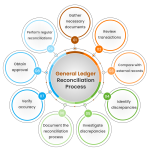1. Introduction: Exploring the Intersection of Gaming, Food, and Nutrition
The rapid evolution of digital entertainment has transformed not only how we play but also how we learn about crucial topics like food and nutrition. Video games, long appreciated for their entertainment value, are increasingly recognized as powerful educational tools that can influence perceptions, knowledge, and behaviors related to healthy eating. By engaging players interactively, games can shape understanding in ways traditional methods might not achieve.
An illustrative example of this integration is this chicken road adventure. While it appears as simple entertainment, it embodies core educational principles—such as timing, biological processes, and decision-making—that mirror real-world food development and consumption behaviors. This modern approach highlights how gaming can serve as a bridge between abstract scientific concepts and everyday food choices.
2. The Educational Power of Gaming: Engaging Learners Through Interactive Experiences
Games excel at promoting active learning by requiring players to make decisions, solve problems, and adapt strategies in real-time. This engagement fosters better retention of nutritional information compared to passive learning methods such as reading or lectures. For example, educational games that simulate grocery shopping or meal planning help players understand nutritional labels, portion sizes, and dietary balance.
Furthermore, well-designed games replicate real-life food choices and dietary behaviors, allowing players to experiment with different eating patterns in a risk-free environment. This experiential learning enhances understanding of concepts such as calorie intake, nutrient balance, and the impact of unhealthy choices. Notable examples include “Food Force” by the United Nations World Food Programme and “Nutritional Tycoon,” which have shown positive effects on health awareness among diverse audiences.
Research Evidence
| Educational Game | Impact on Learning |
|---|---|
| “Food Force” | Improved knowledge of food security and nutrition among children |
| “Nutritional Tycoon” | Enhanced understanding of dietary balance and resource management |
3. Understanding Food Development and Behavior Through Gaming Mechanics
Games often incorporate biological and behavioral aspects of food consumption, providing insights into how organisms develop preferences and respond to environmental stimuli. For example, many simulation games model growth processes, feeding behaviors, and social interactions, reflecting real-world biological dynamics.
A compelling case is the phenomenon of chick imprinting. In avian biology, chicks form strong attachments to the first moving object they see within approximately 48 hours after hatching—a process critical for survival and social learning. This biological window mirrors early human food preferences, where initial exposure influences lifelong eating habits. Games that simulate such processes can help learners grasp how timing and environmental cues shape dietary choices.
Understanding that early experiences influence food preferences underscores the importance of timely nutritional interventions and education.
4. Cognitive and Reaction Skills: Applying Gaming Insights to Food Choices
Reaction time plays a crucial role in making quick, accurate decisions—whether in gaming or everyday life. Studies show that reaction times around 1.5 seconds are typical for healthy adults responding to visual stimuli. Improving these reflexes through gaming can transfer to real-world scenarios, such as choosing healthier foods on the spot or avoiding impulsive eating.
Consider classic arcade games like Q*bert, where players jump on a pyramid while avoiding enemies. This game exemplifies how quick responses and strategic navigation are vital—paralleling how consumers navigate complex food environments filled with tempting but less nutritious options. Enhancing reaction skills via gaming can thus foster more mindful and rapid decision-making around food.
Practical Application
- Quick assessment of food options based on visual cues
- Developing habits of mindful eating through simulated environments
- Reducing impulsive consumption of unhealthy snacks
5. «Chicken Road 2»: A Case Study of Modern Educational Gaming
While not the sole focus, «Chicken Road 2» exemplifies how contemporary games can embody scientific and educational principles. Its mechanics, such as chick growth and environmental adaptation, serve as interactive analogies for biological processes like imprinting and nutrient absorption. These gameplay elements illustrate how timing, reactions, and environmental awareness are crucial in both gaming and nutrition.
Through engaging challenges, players observe how early feeding influences chick development, subtly reinforcing the importance of timing and care in nutrition. Such games foster intuitive understanding, making complex biological concepts accessible and memorable.
6. Non-Obvious Insights: Deepening Our Understanding of Food via Gaming Analogies
Behavioral patterns in gaming often mirror human eating habits. For instance, players tend to develop preferred pathways or responses based on reward systems, similar to how humans develop food preferences influenced by early experiences, cultural exposure, or environmental cues. Recognizing these parallels can help educators design more effective nutritional interventions.
Additionally, game scenarios can psychologically impact attitudes toward food. Rewarding healthy choices within games can reinforce positive behaviors, while exposure to unhealthy options in a simulated context can raise awareness of their consequences. This dynamic offers a promising avenue for long-term habit formation through gamified learning.
Gamified experiences not only educate but also influence attitudes, making them powerful tools in shaping future dietary behaviors.
7. Bridging Scientific Facts and Gaming Examples: Enhancing Educational Impact
Connecting scientific facts—such as the critical period for chick imprinting or the importance of reaction times—with engaging gaming scenarios helps solidify understanding. Visual and experiential learning through games allows learners to internalize complex biological and behavioral concepts more effectively than traditional methods.
For example, a game simulating early food exposure can demonstrate how initial preferences form, mirroring human behaviors. By integrating accurate scientific principles into game mechanics, developers can create immersive educational experiences that deepen comprehension and retention.
8. Future Directions: Integrating Gaming and Nutrition Education
Emerging trends include the development of more sophisticated educational games that incorporate scientific accuracy, personalized feedback, and adaptive challenges. These innovations aim to make nutrition education more engaging and effective, particularly among younger audiences.
Opportunities exist for educators and developers to collaborate on creating interactive tools that simulate biological processes, dietary planning, and even environmental impacts of food choices. Such tools can be integrated into school curricula, health campaigns, and personal health management apps, broadening their reach and impact.
Potential Benefits
- Enhanced engagement and motivation among learners
- Better understanding of complex biological and behavioral concepts
- Long-term adoption of healthier eating habits
9. Conclusion: Harnessing Gaming to Foster Better Food and Nutrition Understanding
In summary, gaming holds significant promise as an educational tool for improving food literacy and nutrition awareness. Its ability to simulate real-world biological processes, reinforce decision-making skills, and influence attitudes makes it a valuable complement to traditional education methods. As demonstrated by modern examples like this chicken road adventure, innovative games can effectively connect scientific facts with engaging experiences.
To maximize their potential, educators, developers, and learners should embrace gaming as a serious, accessible means of fostering healthier food choices and lifelong nutritional habits. The future of nutrition education lies in the creative integration of science and play, transforming complex concepts into memorable, impactful lessons.
Financial and Business expert having 30+ Years of vast experience in running successful businesses and managing finance.

